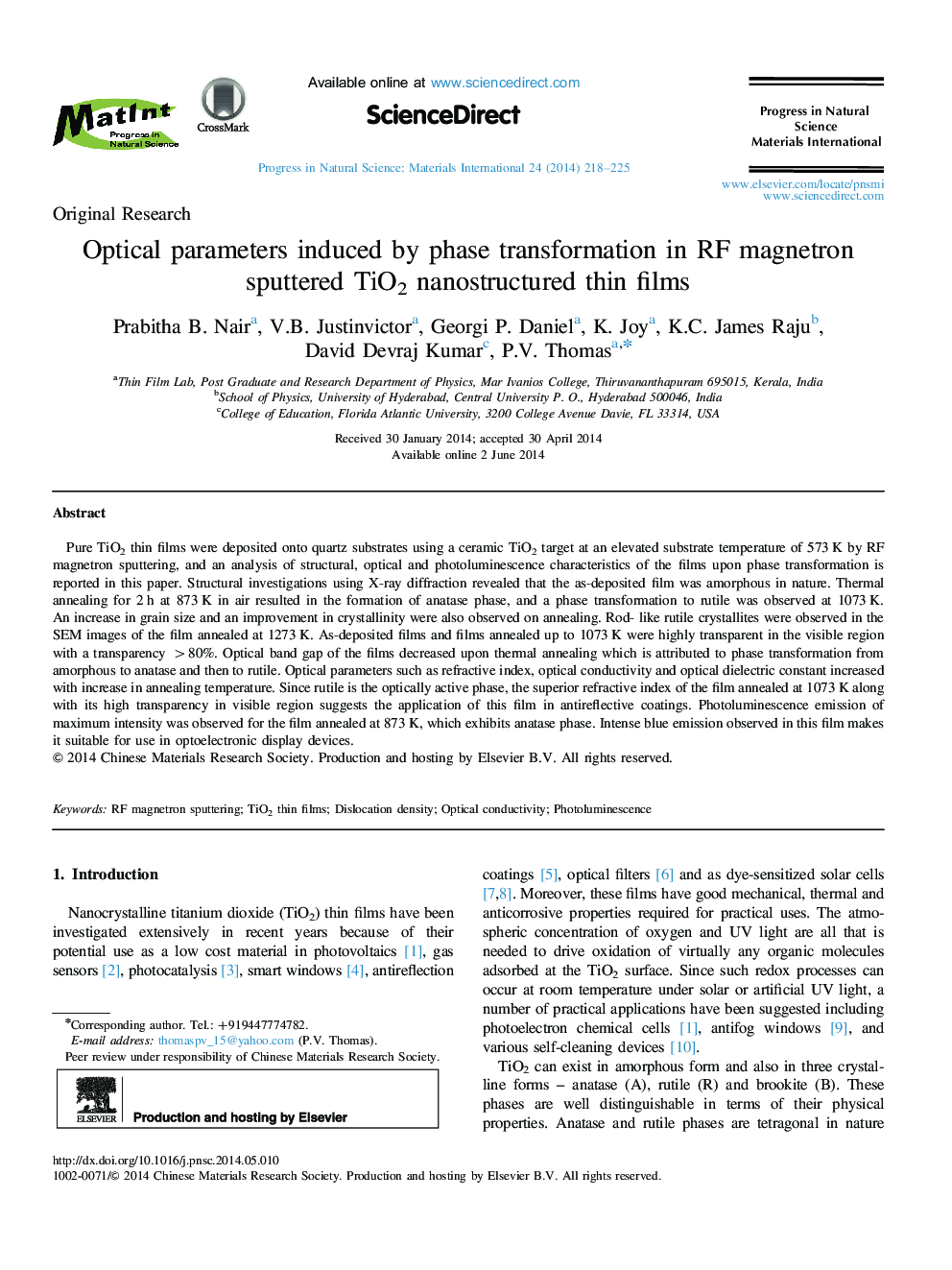| Article ID | Journal | Published Year | Pages | File Type |
|---|---|---|---|---|
| 1548273 | Progress in Natural Science: Materials International | 2014 | 8 Pages |
Pure TiO2 thin films were deposited onto quartz substrates using a ceramic TiO2 target at an elevated substrate temperature of 573 K by RF magnetron sputtering, and an analysis of structural, optical and photoluminescence characteristics of the films upon phase transformation is reported in this paper. Structural investigations using X-ray diffraction revealed that the as-deposited film was amorphous in nature. Thermal annealing for 2 h at 873 K in air resulted in the formation of anatase phase, and a phase transformation to rutile was observed at 1073 K. An increase in grain size and an improvement in crystallinity were also observed on annealing. Rod- like rutile crystallites were observed in the SEM images of the film annealed at 1273 K. As-deposited films and films annealed up to 1073 K were highly transparent in the visible region with a transparency >80%. Optical band gap of the films decreased upon thermal annealing which is attributed to phase transformation from amorphous to anatase and then to rutile. Optical parameters such as refractive index, optical conductivity and optical dielectric constant increased with increase in annealing temperature. Since rutile is the optically active phase, the superior refractive index of the film annealed at 1073 K along with its high transparency in visible region suggests the application of this film in antireflective coatings. Photoluminescence emission of maximum intensity was observed for the film annealed at 873 K, which exhibits anatase phase. Intense blue emission observed in this film makes it suitable for use in optoelectronic display devices.
